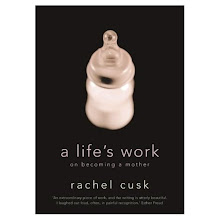 We find ourselves amid a vast expanse of desert (only 230 kilometres from Syria's border with Iraq) in the ancient town of Palmyra (above). As I battle to blog via a dial-up connection let me reminisce our last few days.
We find ourselves amid a vast expanse of desert (only 230 kilometres from Syria's border with Iraq) in the ancient town of Palmyra (above). As I battle to blog via a dial-up connection let me reminisce our last few days.En route from Aleppo to Hama - an important agricultural and industrial region of Syria - we passed the ruins of the Temple of Saint Simeon, a 5th century extremist-Christian monk who spent the last 36 years of his life living atop pillars (ranging from 9 to 60-feet high). In his quest for the meaning of life, and following a revelation he had in a dream, Simeon joined a monastery at 16 only to be dismissed for his extreme forms of penance (allegedly Simeon was a cutter). Seeking solace in the hills he went to live in a cave but when word spread of his devotion he soon found himself the object of pilgrimages. It was then he began to build pillars. Thanks to pilgrims and monks providing him with food and water via ladders, Simeon was able to live permanently mid-air. Why exactly he was made a saint is unclear, although the fact that he was reflects the favouritisms of the Christian church: Simeon taught that women were the spawn of the devil and refused for women to come anywhere near his pillars of solitude.

The Temple of St Simeon - the boulder representing the site of his first 9-foot-high pillar
Not exactly a hot spot for tourists, in Hama we were met with cautious smiles (revealing rotten gums and blue-black, bead-like teeth) and a good numbers of, "Well come"'s. Promoting tourism isn't big on the Syrian Government's agenda; however, Hama is considered a 'go to' place for locals to visit the 14th century water wheels (or norias) that border the Orontes river. Sadly the wheels weren't turning for our visit.
While revered by the townspeople, that doesn't stop them using it as their local dumping ground for waste. One woman begging on a bridge, with her crying toddler on her lap, casually threw a used diaper over the edge in between her wails of, "Baby. Money. Baby. Money." The build up of refuse has even caused a phenomenon I've termed, 'bubbling river' – first we thought raindrops were falling, but then we realised the bubbles were actually rising from below the green-murkiness. Lovely.
From Hama we bundled our group of four into the back of an old Merc (c.1955). The boot full to bursting we sat with bags on laps for the four hour drive to Palmyra, stopping just out of Hims for a guided tour of Crac des Chevaliers - one of the best preserved Crusader fortresses in the world. Only 30 kilometres from the border with Lebanon, Boyfriend was able to see the snow-capped mountains of his mother's ancestral homeland; although being as sentimental as a stone it required some coaxing on my behalf for him to eventually take a photo. As far as ruins go, Crac des Chevaliers is definitely one to see. Built in the early12th century by more than 1100 slaves over 75 years the result was a castle fit for fairytales. Heavily protected by two moat systems and innumerable holes in the ceilings and walls from which hot oil was supposedly poured over anyone attempting a break-in, the castle was never penetrated. Instead the Crusaders gave it up to the Islamic army in the late 13th century in return for safe passage out of the region.
Arriving into Palmyra in the late afternoon we were once again met by a semi-ghost town. Not ones for working excessively at the best of times, it would seem Syrian's take the words "off season" literally. Of the few shops open for business we had the options of dusty jewellery, carpets, remodeled Roman and Islamic helmets and shisha pipes for sale, and two run down restaurants. But according to The Lonely Planet, Palmyra is the place to see.
And to be fair, the ruins of the ancient city are fantastic. Set in a desert oasis and established in the 1st century, it was a prosperous city along the trade route linking Persia to the Mediterranean ports of Roman Syria. Having seen lots of (as Boyfriend calls them), "bundles of old rocks," on this trip we were surprised by the sheer size of the ruins and the enormity of the relics that have been restored. A trip at sunset to high hilltop where Palmyra's citadel still stands, gave us a wonderful panoramic view of the site. If only the new town were half as grand.
In the spirit of the Bedouins, tonight we ate a traditional underground-oven cooked dinner of chicken and rice in a carpeted tent amid the oasis. Suitably stuffed, we all agree that the food on offer in Syria has surpassed that of Turkey. Hummus, mattabal and tabuleh are provided in abundance, along with to-die-for falafel wraps sold by street vendors for a mere 20 cents (US). How strange it is to be in gastronomic heaven, amongst all this dust and debris.





























No comments:
Post a Comment